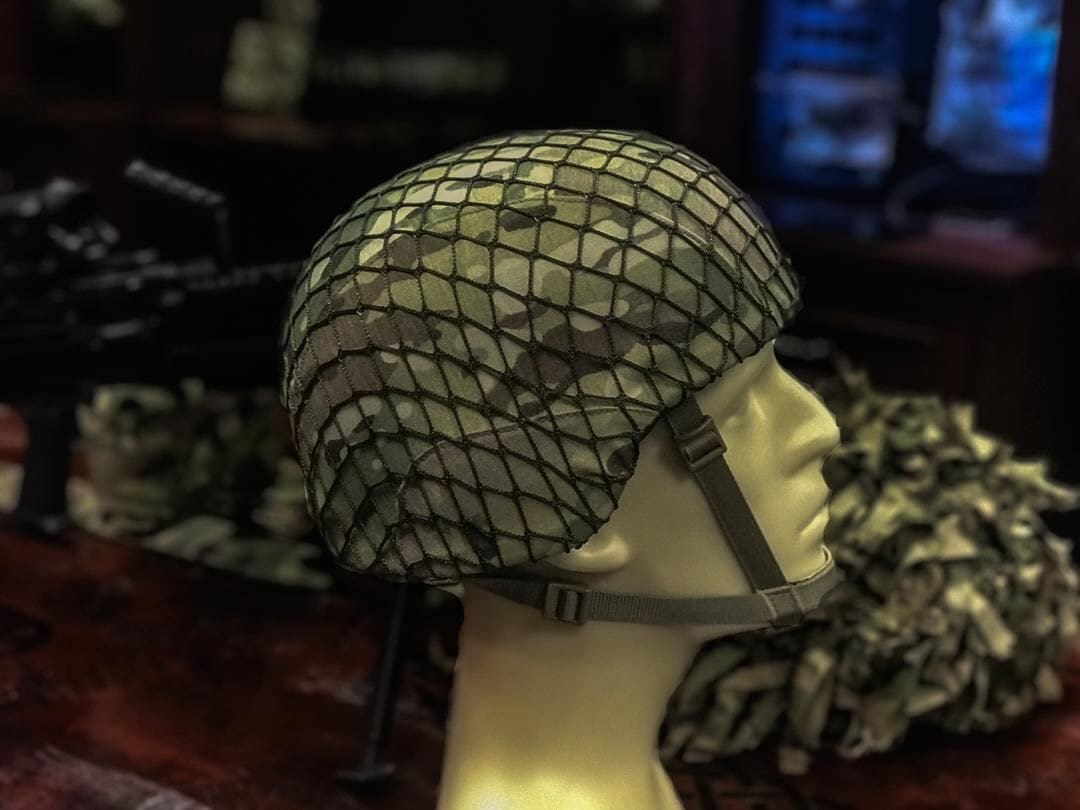
Raptor Tactical has introduced a World War Two-style net Helmet cover for the Army Combat Helmet.
Shown over a MultiCam cloth cover. Mesh is OD.
www.raptortactical.com/home/232-army-combat-helmet-net-cover-wwii-style

Raptor Tactical has introduced a World War Two-style net Helmet cover for the Army Combat Helmet.
Shown over a MultiCam cloth cover. Mesh is OD.
www.raptortactical.com/home/232-army-combat-helmet-net-cover-wwii-style
AUSTIN, Texas — When Sgt. 1st Class Will Roth joined the Soldier Lethality Cross-Functional Team on the first day of October last year, he was the youngest member of the team. At 34 years old, he was the only non-commissioned officer and the only National Guard Soldier on a team comprised of Colonels and senior level civilians.
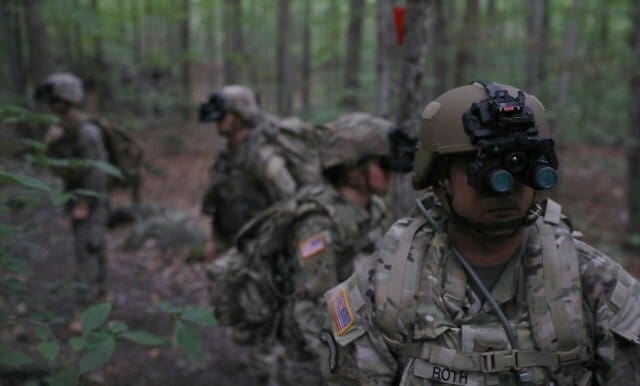
“It was overwhelming and humbling at first. They told me I’d be doing things E7s don’t typically do. I learned really fast that no one here is driven by ego, and nobody cares about your resume, either. They want to know what you’re doing for Soldiers today,” Roth said, as he looked back on a whirlwind year that earned him enough frequent flier miles to take his wife and two sons on a nice vacation far, far away.
If only there was time for that. Come October 1, Roth leaves Fort Benning, Ga., for Arlington, Va., where he will work with the National Guard Bureau’s Training and Human Performance.
But he leaves the CFT with a great sense of satisfaction, having seen the concept of the Enhanced Night Vision Goggle – Binocular become reality. The hard work he invested with the CFT comes to fruition later this month when the goggles are fielded to the 2nd Armored Brigade Combat Team, 1st Infantry Division at Fort Riley, Kansas. They will take them to Korea early next year, where they will benefit from the ENVG-B capability to “see” in low- and no-light environments and weather conditions that would typically render a night vision device useless.
The ENVG-B has been Roth’s baby from the start; from the day he was tasked to serve as the technical advisor for the ENVG-B, one of the Soldier Lethality CFT’s portfolio of programs, which also includes Next Generation Squad Weapons and the Integrated Visual Augmentation System, or IVAS. Roth has participated in every single aspect of the development and testing of the ENVG-B, including eight Soldier Touch Points, which are significant milestones in the CFT’s aggressive process of development and acquisitions. Soldier Touch Points, or STPs, are training and testing events that put the binoculars in the hands of soldiers and Marines – hundreds of them – over and over and over.
They use the binoculars in a field training environment under a variety of conditions and offer feedback on the utility and practicality of the product. Practicality is important; user acceptance is critical.
“Honestly, first time I saw (the ENVG-B,) I was skeptical,” said Roth, who served in combat with the 2nd Battalion, 75th Ranger Regiment, early in his career and understands the needs of the combatant to move swiftly and maintain constant situational awareness. “It has to deliver both, and I couldn’t see that a year ago, early in the process. I couldn’t envision a time when Soldiers would accept this product and trust it in the field.”
That all changed when Roth participated in his first STP at Fort Drum, New York, where he watched a Marine lay on his back, fire over his shoulder, and hit targets at 50 and 100 meters using the Family of Weapons Sights — Individual, which gives the ENVG-B Rapid Target Acquisition capabilities, essentially the ability to see a target with the goggle wirelessly paired to the optic on the weapon.
“He hit five out of seven. It gave me chill bumps,” Roth said. “I decided this was an insane game changer. I’m a believer, one hundred percent. Nothing else offers these kinds of capabilities; I’ve seen it for myself, and I’ve heard it from hundreds of Soldiers and Marines.”
For his part, Roth said he is proud to have been a part of the “team of teams” that saw this capability from concept to fielding. And it was literally a team of teams. Though Army Futures Command is new, and it represents a new way of doing business when it comes to developing requirements and producing capabilities – faster and more efficiently – it absorbed a number of existing Army equities, such as the Combat Capabilities Development Command and the various Capability Development Integration Directorates.
The list is long, the network is complicated. With the ENVG-B, AFC’s SL CFT inherited the requirements process early on from the Maneuver Capability Development Integration Directorate and Program Executive Office Soldier worked with L3 Harris out of Londonderry, New Hampshire, to produce the product from prototype to fielding.
“AFC is designed to develop new relationships with academia and industry and capitalize on the institutional knowledge and the experience of existing organizations that we now call partners,” said Col. Travis Thompson, the Deputy Director of the SL CFT under Brig. Gen. Dave Hodne. “We all move in the same direction at the same time, and we move quickly; it’s very effective. But the key to the success of the whole initiative is the constant engagement with Soldiers, the touch points that allow us to develop rapidly. That’s Soldier Centric Design, the practice of putting the needs of the Close Combat Force at the center of everything we do, and to do that, we have to have them touch it, wear it, try it, evaluate it, over and over and over.”
The iterative process that incorporates STPs, some of them lasting for weeks, also includes other events designed for the same purpose but different missions: User Studies, Juries, Capabilities Sets, and Sprints. They all serve to hasten the identification of failures or shortcomings so as not to field a product that is more trouble than its worth from the Soldier’s perspective. It’s a fail early, fail cheap philosophy that drives the CFT’s pursuit of efficient and cost effective acquisitions in the quest for combat over-match.
“It doesn’t do a bit of good to develop a dynamic tool or a weapon that soldiers find inconvenient or one that slows them down or hinders their progress,” Thompson said. “By putting the ENVG-B to the test in field training exercises under a variety of conditions, we learned what worked and what didn’t, and we made the changes necessary at every step of the design and development process to ensure the product we field next week is not a novelty, but a practical tool that will make our Soldiers more lethal, more survivable and better able to maneuver in challenging conditions.”
Thompson speaks of a familiar concept once commonly called “Soldier as a System.” These days, proponents call it Adaptive Squad Architecture (ASA), and depending who you ask, it either drives or it’s driven by the Soldier Centric Design. ASA demands that AFC partners consider not only the need or problem that drives the development of any piece of the Soldier kit — the sum of everything the Soldier wears, carries or uses — but the impact it will have on other elements of the kit, the Soldier, and his or her squad.
“We’ve all heard the story of the body armor that rises up when you shoot from a prone position and forces your helmet to fall forward over your eyes,” Thompson said. “That’s what happens when you field a great piece of kit that doesn’t play well with others. That’s simplifies the concept of Adaptive Squad Architecture to an elementary level – very, very basic — but it sums it up nicely. Everything will work together so the whole is greater than the sum of its parts.”
Toward that end, Thompson said, the Soldier Lethality CFT will continue to develop programs, rapidly and efficiently, that work together to enhance the proficiency of the Close Combat Force, the roughly 100,000 Soldiers — or four percent of the Department of Defense – who close with and engage the enemy. The vast majority of them are Infantrymen, and historically, they incur 90 percent of casualties on the battlefield.
“The Army’s modernization strategy has one focus: to make soldiers and units more lethal to win wars and come home safely. Everything we do is centered on that goal,” Thompson said. “And we’re doing that successfully by leveraging emerging technologies, science, human potential and all of these partnerships that keep us moving aggressively toward over-match.”
The Soldier Lethality CFT continues to test prototypes of the IVAS, with plans to field in 2021, and the Next Generation Squad Weapon rifle and automatic rifle, which will replace the Squad Automatic Weapon and the M1/M4 Carbine, with plans to start fielding in 2023.
“We move quickly, but with a laser-like focus,” Roth said. “It’s all about the Close Combat Force, the guys who go in first and hit the ground running. That’s why the folks here hit the ground running every day.”
By Bridgett Siter, Communications Director, Soldier Lethality CFT
Like most military people, I believe in Valhalla. I have seen the 13th warrior and have always hoped to be in Valhalla when I die. The Vikings believed in an afterlife, and these were based on the religious beliefs they held. We have been learned about their practices by both archaeological and textual sources. The Vikings believed that it was possible to take their worldly possessions into the afterlife with them. So, an essential feature of Viking funerals was the grave goods. The Vikings believed that warriors who fell in battle would earn the right to enter Valhalla, an enormous hall located in Asgard, the domain of Odin. There, the fallen warriors would feast and fight until the arrival of Ragnarok. The dead needed to have their equipped so they could fight in the afterlife. There was more than one realm for the dead include Folkvangr (also for warriors), Helgafjell (for those who have led good lives), and Helheim (for those who died dishonorable deaths). This could be from laziness, old age, for example, to die in your bed with never doing anything good for your people. In Viking times, dying bravely was definitely the most honorable.
One of the most essential objects required by a dead Norse was a warship. The Vikings were great seafarers, and they believed that ships would help provide them with safe passage into the afterlife. Although the warship played a prominent role in Viking funerals, there was no standard funeral., it was based on your status. The grave could also include slaves or thralls, and, in some cases, the widow would choose to be sacrificed to join her husband on the journey to Valhalla. It the Middle Ages a traveler named Ahmad ibn Fadlan gave the account of a funeral like no other. At the funeral for a Viking chieftain, he said it included a sacrificial female slave who was forced to drink copious amounts of alcohol, then she was raped by every man in the village as a tribute to the deceased. From there, she was strangled with a rope, stabbed by a matriarch of the village (known as the Angel of Death), then placed in the boat with her master and set on fire. The more polite Viking would bury people with stuff they had in life like a craftsman might be buried with his tools. A Viking woman might find her cloth-making equipment or cooking tools would follow her in the afterlife.
Vikings Traveled to the Afterlife by Ship but Not by Sea
Thru out Scandinavia, Archaeology has discovered some Viking burial mounds that were meant to resemble ships. They used stones to outline the shape of what looks like small ships. Higher ranking Vikings, such as chiefs and kings, were even able to have actual ships accompany them into the afterlife. In some cases, the boats would be buried with its contents, while in others, they would be burnt before the burial. There is a widespread belief today that the Viking set the ships on fire before pushed out to sea, but I am sorry to say this, but there is no real proof that this has ever happened. So, no flaming arrows. Sorry

Apart from their ships, warriors entering Valhalla would be required to bring their weapons and armor, these objects were part of a Viking’s grave goods. Archaeologists have found blades as part of a Viking’s grave goods would usually be broken or bent. This was meant to symbolically signify the final death of the individual, as the Vikings believed that a warrior’s soul was linked to his weapon. Additionally, the destruction of the blade served as a deterrent to grave robbers.
Grave goods also served to ensure that the deceased was satisfied in the afterlife. The Vikings believed that if the dead were not appeased, they could return as a Draugr (unfriendly ghost) to haunt the living. The undead could be blamed for everything that was going bad, from losing a battle or the crops not growing. If they thought a Draugr was up to no good, they would dig up the last people buried and look for signs of undead activity. When a Draugr was identified, the Vikings would rebury the body with more grave goods, assuming at the person had been a highly respected person in life. Sometimes they would go as far as to stake the body down to make sure it couldn’t get up again and lastly, they would chop off their head so as to kill it, very much like Dracula or the walking dead.
When you died, there were two typical ways of dispose of the body, cremation or inhumation (cover you with a rock mound basically) (the ground was frozen most of the time, so the inhumation was the best way for them to bury someone)
There are typically two common ways to bury the dead, and the Vikings did practice both. The first method, cremation, is to burn the body, the ashes, could then be scattered, buried, or sailed out to sea. The second, inhumation was to bury the body in its current state under the ground, and then either place earth, dirt or stones on top of the body.
It was normal in Norse times to cremate the deceased body before a land or sea burial, a practice that had a significant reach to their afterlife. By cremating their dead, the Vikings believed the smoke would carry them to their rightful destination in the afterlife. Successful cremation required a scorching fire, hot enough to burn flesh and bone to ash and to achieve this a pyre was needed. The Vikings used pyres (basically a big pile of very dry wood that would burn at very high heat) (you know like the fire Luke used to cremate Darth Vader” his father”) to cremate their dead. Without the intense heat caused by a pyre, a typical fire would likely not burn the body completely. This could leave parts of the body remaining and is of course, not desirable.

A Viking sea burial.
Another kind of burial was for the Vikings to sail their dead out to sea. This practice often involves the burning of the ship before the dead are cast out. Many believe that the body was cremated before the ship was sailed. Either way, it was common for the dead’s goods to travel with them out into the water. This type of burial was not common however and was likely reserved for sea captains, noble Vikings and the very wealthy. In old Norse times, boats would have taken months to construct and would not have been wasted without valid cause or a suitable amount of status. Some woman held high statues also. One of the most extravagant boat burials honored two women, who likely died around 834 A.D. Known as the “Oseberg ship,” it’s one of the most well persevered Viking artifacts ever found. While the Vikings were known for the craftsmanship that went into their vessels in general, the size and detail of the Oseberg were above and beyond. Seventy feet long and nearly 17 feet wide, the ship had 15 oars on each side, a pine mast more than 30 feet high, and was spacious enough to fit 30 people. You go girls.
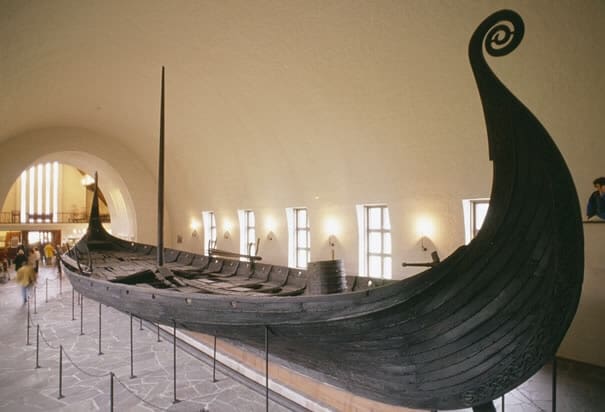
Typically, the Vikings would wait for seven days before the celebration. This day would be marked with the drinking of ale, which signified the passing of any property from the deceased. After this celebration, the heir would truly claim their inheritance. The exact rituals of Viking funerals are challenging to say, (so maybe flaming arrows) as they kept minimal written accounts of their lives and deaths. Regardless of how the body was disposed of, a few rituals remained almost constant. The body was draped in new clothes explicitly prepared for the funeral, and a ceremony was held featuring songs, chants, food, and alcohol. Death rituals are designed to help those left behind come to terms with the loss. Many have survived but slightly modified over the centuries. Looking at what we do today when someone dies today. It is very close to the Viking funnerals. We put them in their uniform, sometimes we give them things for the afterlife, swords, tomahawks, alcohol and we drape them in cloth, but it is our flag, the symbol of our tribe and nation. I would never compare us to the Vikings, as they had no rules and did what they wanted to do. But a lot of the warrior spirit of them is in every person that goes to fight and defend their brothers.
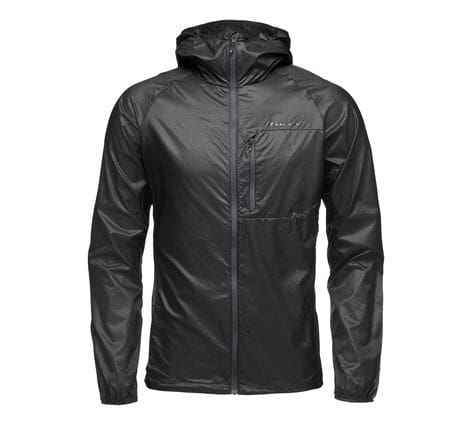
The Distance Wind Shell features Green Theme Technology Breathable Water Protection, an all-new environmentally friendly PFC-free DWR. It packs down and stows into its chest pocket with a carabiner clip loop, so you can attach it to your harness during fast and light missions that require emergency protection if the weather breaks.
www.blackdiamondequipment.com/en_US/distance-wind-shell-mens-AP7470200002MED1
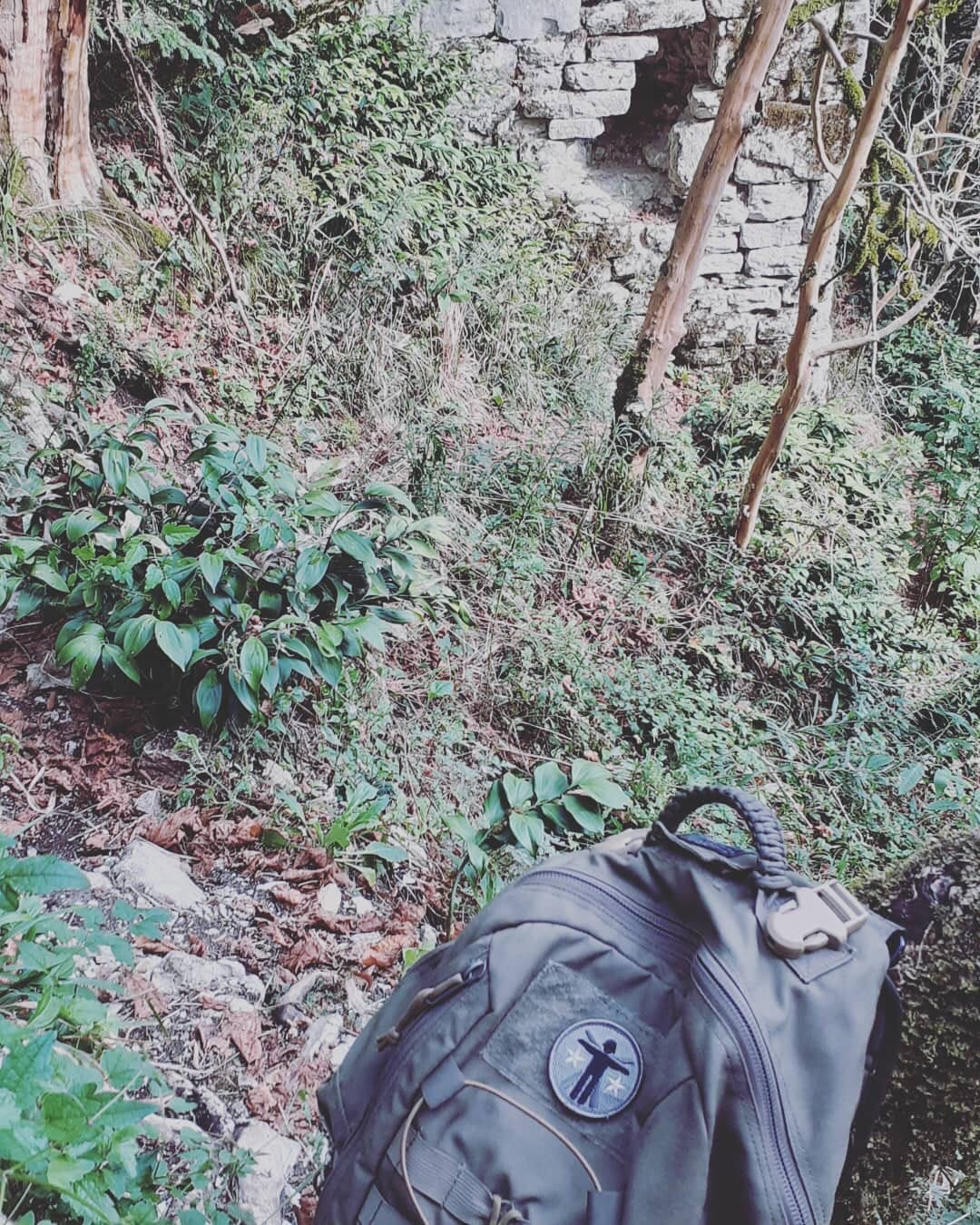
Dan K sends another shotout from the medieval Genua fortress in the Sochi mountains.
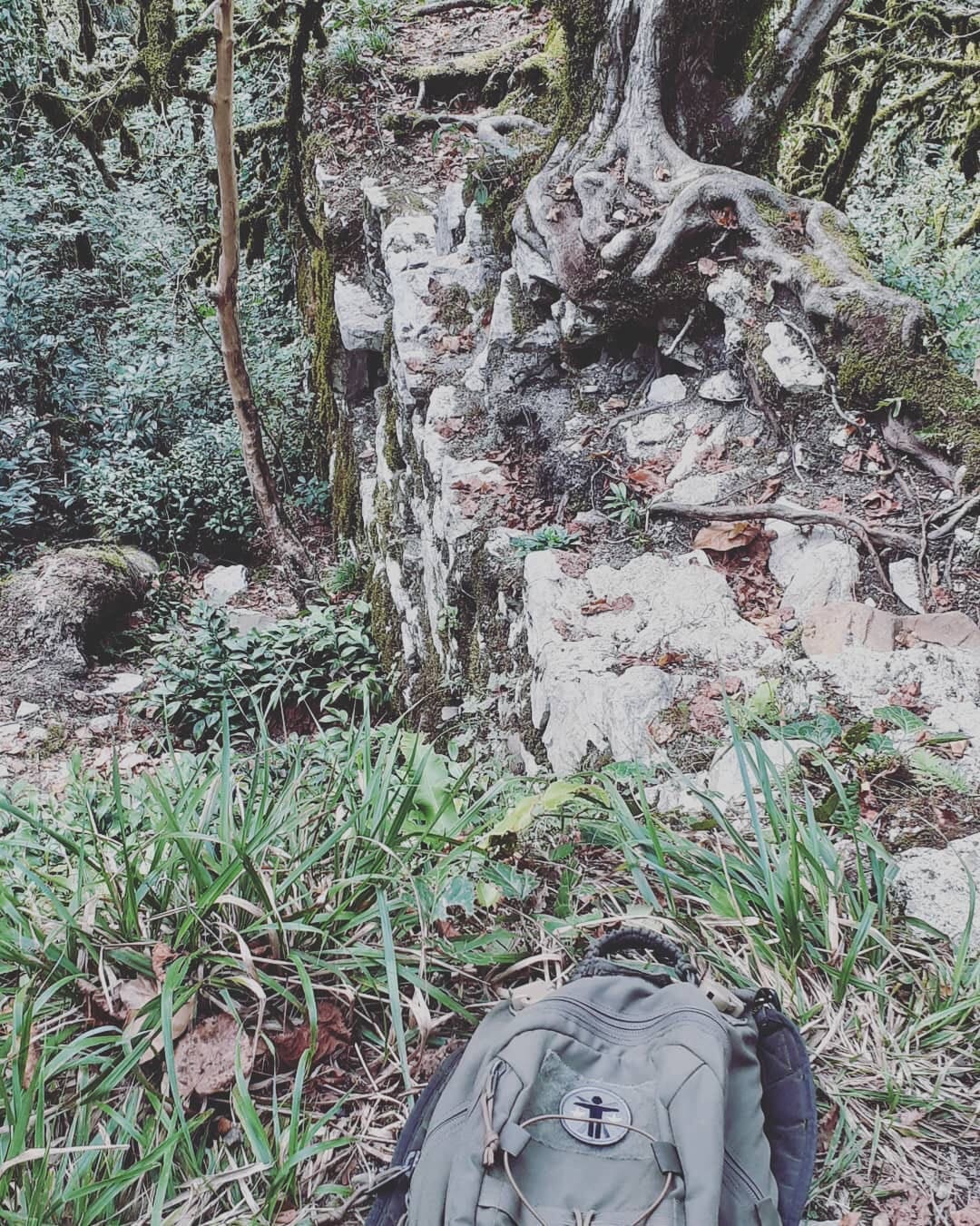
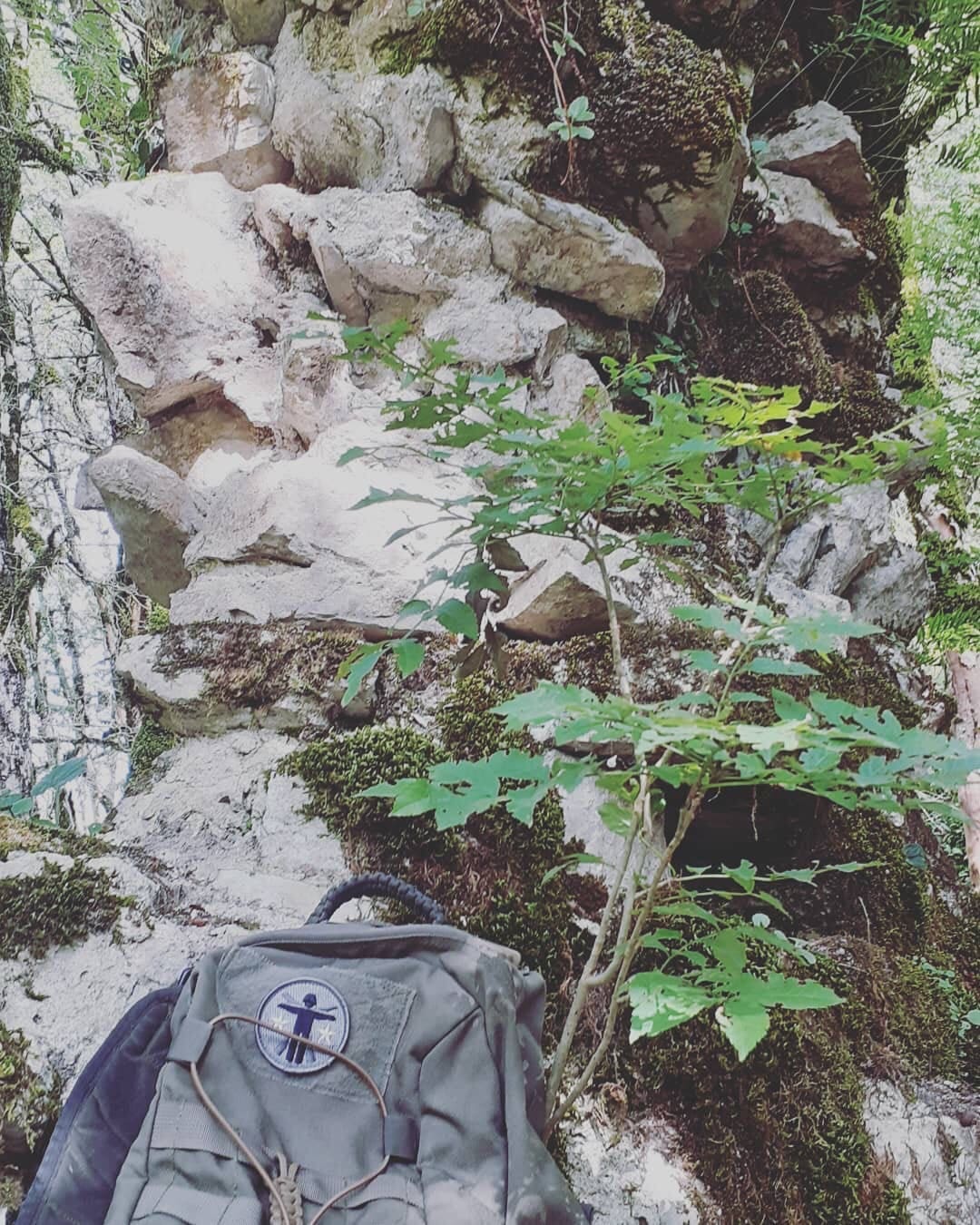
JOINT BASE LANGLEY-EUSTIS, Va. (AFNS) —
Gen. Mike Holmes, Air Combat Command commander, discussed the designation of the 16th Air Force as a new information warfare numbered air force Sept. 18 at the Air Force Association’s Air, Space & Cyber Conference in National Harbor.
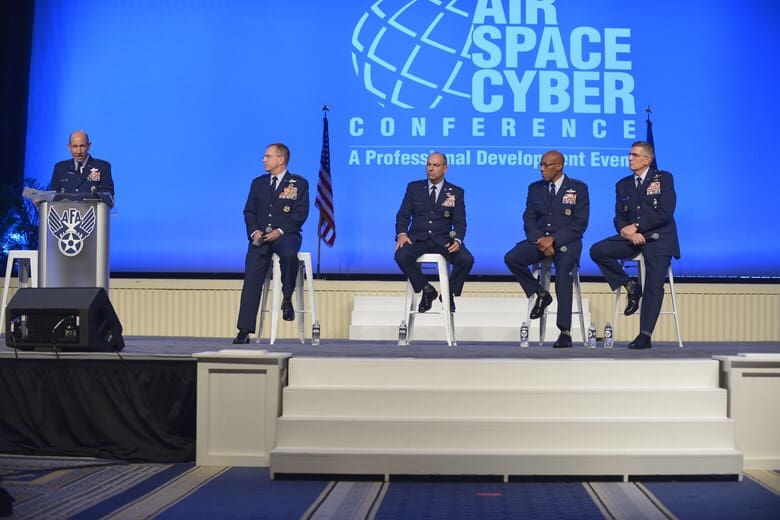
ACC will integrate 24th Air Force and 25th Air Force capabilities into a new organization under a single commander who will be responsible for providing information warfare capabilities to combatant commanders with the speed to match today’s technological environment.
“By having cyber and all the intelligence, surveillance and reconnaissance tools together, one of the things it allows me to do is build a collection plan in advance before I do something and am able to have better information to support better decisions for our warfighters,” he said. “The Air Force is not going to run independent information warfare campaigns, but we’ll build those, organize, train and equip tools for combatant commanders.”
The heritage of 16th Air Force pays tribute to a group of highly decorated Airmen with a history of continued excellence in joint warfighting, strategic deterrence and military partnerships. During the Balkans air campaigns in the 1990s, the 16th Air Force pioneered efforts in the way the Air Force conducts intelligence operations, setting the foundation for operating in a continuously evolving information environment.
“We want to arm our leaders with options they can use that are proportional to the things that peer adversaries are doing,” he said. “We think we can present more robust teams with better intelligence support behind them and present some information ops options, which we have some game at already, but to improve that and be able to offer it on a larger scale to more combatant commanders at once.”
Activating 16th Air Force emphasizes the organization’s continued excellence in addition to its early use of integrated information systems and emerging technologies, such as remotely piloted aircraft. Just as the 16th Air Force made history bedding down the RQ-1 Predator at Taszar, Hungary, to provide enhanced ISR capabilities in the Balkans, it will soon make history again in the expanding arena of information warfare.
“The activation of 16th (Air Force) will synchronize the mission areas of ISR, electronic warfare, cyber and information operations capabilities,” said Holmes. “This integrated capability will provide multi-domain options to component and combatant commanders around the globe.”
The 16th Air Force will be located at Joint Base San Antonio-Lackland, Texas, where ACC will hold an activation ceremony later this year.
By Staff Reports, Air Combat Command Public Affairs
SCHOFIELD BARRACKS, Hawaii — Similar to the implementation of the new Army Combat Fitness Test (ACFT), the Army is now changing how Soldiers qualify with their weapons, making individual weapons qualification more combat focused beginning October 2019.
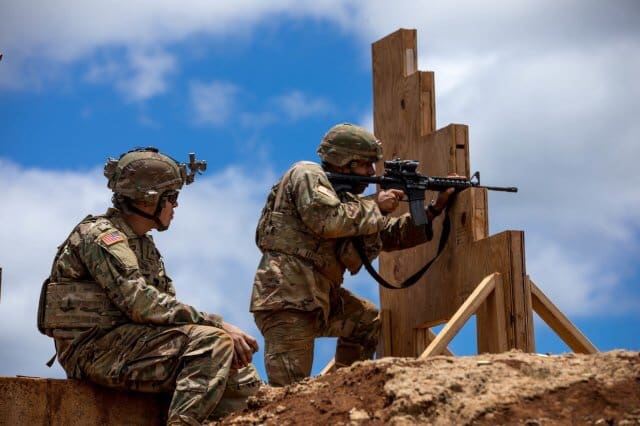
Soldiers across the 25th Infantry Division with varying skill levels prepared for the new marksmanship standards by conducting a pilot program to assess current installation support capabilities at Schofield Barracks, Hawaii.
The new four-phase course will now feature standing firing positions. Soldiers are issued four 10-round magazines to engage 40 pop-up targets from the four shooting positions. Soldiers start in the standing position then go to the prone unsupported, then prone supported, kneeling supported and finally the standing supported position. Soldiers utilize a barricade and will have 8-10 second intervals to change magazine and positions.
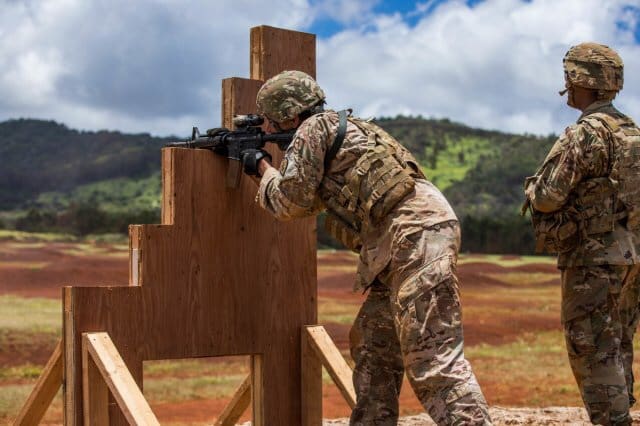
The new course will replace the current marksmanship qualification course with one that requires Soldiers to engage targets faster and to operate as they would during an enemy engagement.
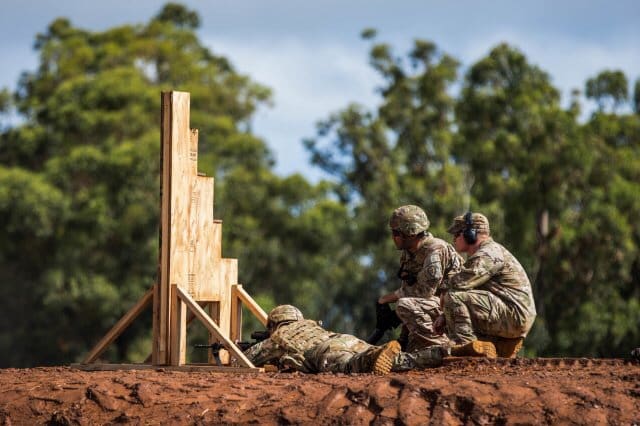
“The old qualification did not help in combat situations, so they incorporated magazine exchanges and position changes by yourself to represent combat,” said Staff Sgt. Tadeysz Showers, assigned to the 25th Sustainment Brigade. “No matter the military occupational specialty (MOS), any MOS can teach a Soldier how to do this new weapons qualification.”
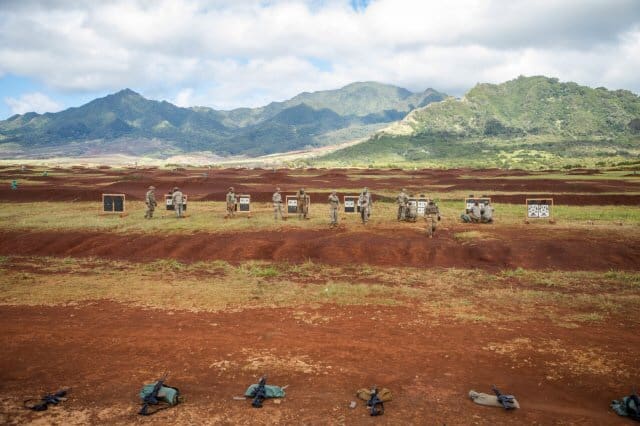
The division marksmanship pilot program was led by the Lightning Academy Senior Instructor Staff Sgt. Daniel Martin and three other instructors through preliminary marksmanship instruction (PMI), Engagement Skills Trainer (EST), and qualification tables on a standard pop-up range.
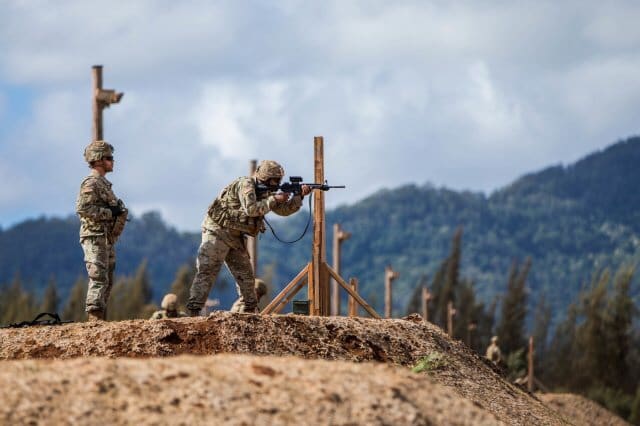
In the current qualification course, Soldiers take instructions from the range tower, such as when to change magazines and firing positions. “Now, the qualification only has commands to begin the qualification and when it has ended,” said Martin. “The four 10-round magazines will be in your kit, and you will transition your position and conduct magazine changes on your own without any commands from the tower.”
“The new qualification saves time,” said Showers. “The old qualification took about 20 minutes, this one takes about four minutes to execute and is much faster paced.”
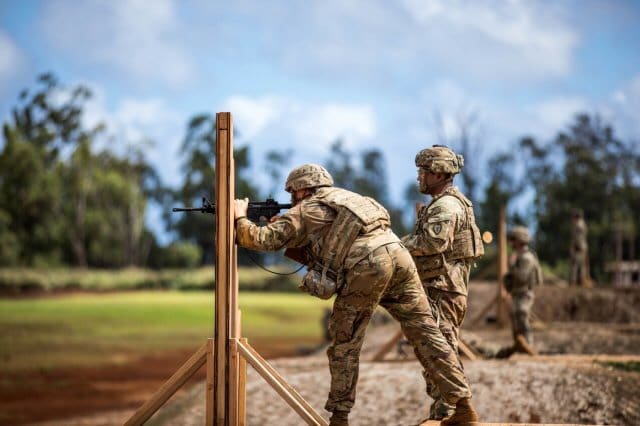
The course is set to become the Army-wide standard for rifle marksmanship. Qualification implementation begins October 2019.
“The new qualification is more challenging, but a lot more realistic,” said Martin. “Some Soldiers have never conducted magazine exchanges on their own without being told when to on the line during the Automatic Record Fire. The course is helping the Army become more efficient in urban combat scenarios.”
“Soldiers start by receiving a series of classes on how to properly zero the rifle, whether it’s a bare rifle or with optics,” said Showers. “Soldiers received classes on laser bore sight, Minute of Angle (MOA), zeroing process, windage, ballistics, and also received EST training and practiced position changes before going to a live range.”
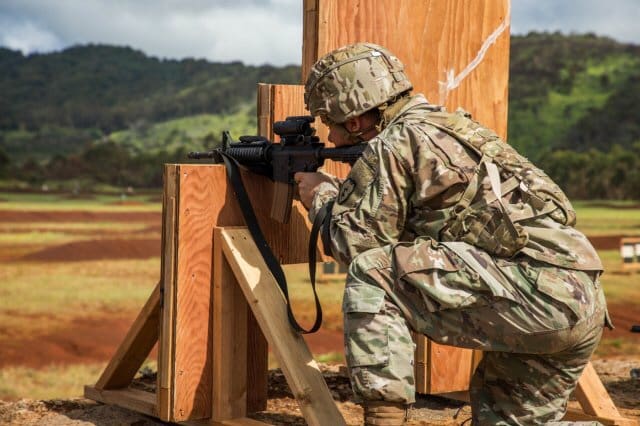
The new weapons qualification maintains the same score requirements as the current system to pass in each category; Soldiers must hit 23 targets out of 40 to qualify. Soldiers must hit 23 to 29 targets for a Marksman rating, 30 to 35 for Sharpshooter and 36 to 40 to qualify for Expert.
“This new weapons qualification is more combat oriented with changing positions, changing magazines and engaging the targets,” said Sgt. Octavius Moon assigned to the 25th Sustainment Brigade. “This will help Soldiers shoot better as well as make ranges faster and have more Soldiers qualified. It helps Soldiers become more knowledgeable about their weapon as well.”
By SGT Sarah Sangster
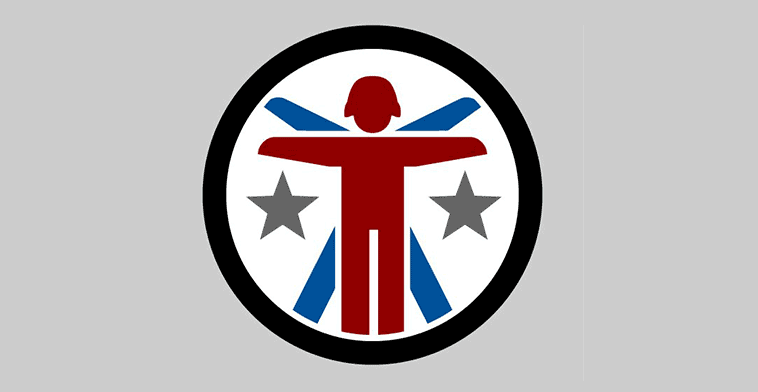
As you may have seen back ’round the time of Blade Show (see SSD coverage here), Zero Tolerance Knives recently released the ZT0223. A Tim Galyean design, the new folder takes its inspiration from what is obliquely referred to as a “classic military knife” (read, Ka-Bar), but the ZT knife is a folder, “…making it easy to EDC and ready for every task you ask it to take on.”
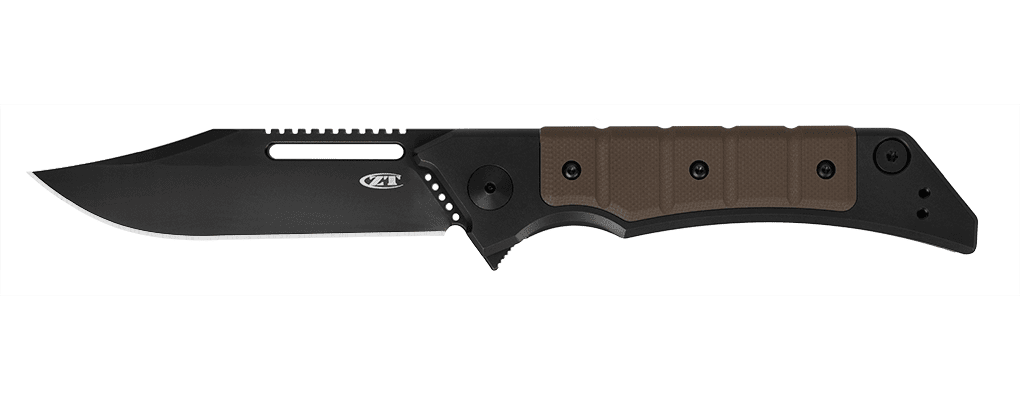
Details are as follow;
The blade is clip-point style with heavy jimping along the spine and a cutout to decrease weight. CPM 20CV blade steel offers exceptional hardness and wear resistance to take and hold a sharp edge, toughness to resist impact, and—with the highest level of chromium of any high-vanadium steel—excellent corrosion resistance. For an extra measure of blade protection, ZT adds black DLC (Diamond-Like Carbon) coating, ceramic bead blasted for a non-glare finish.
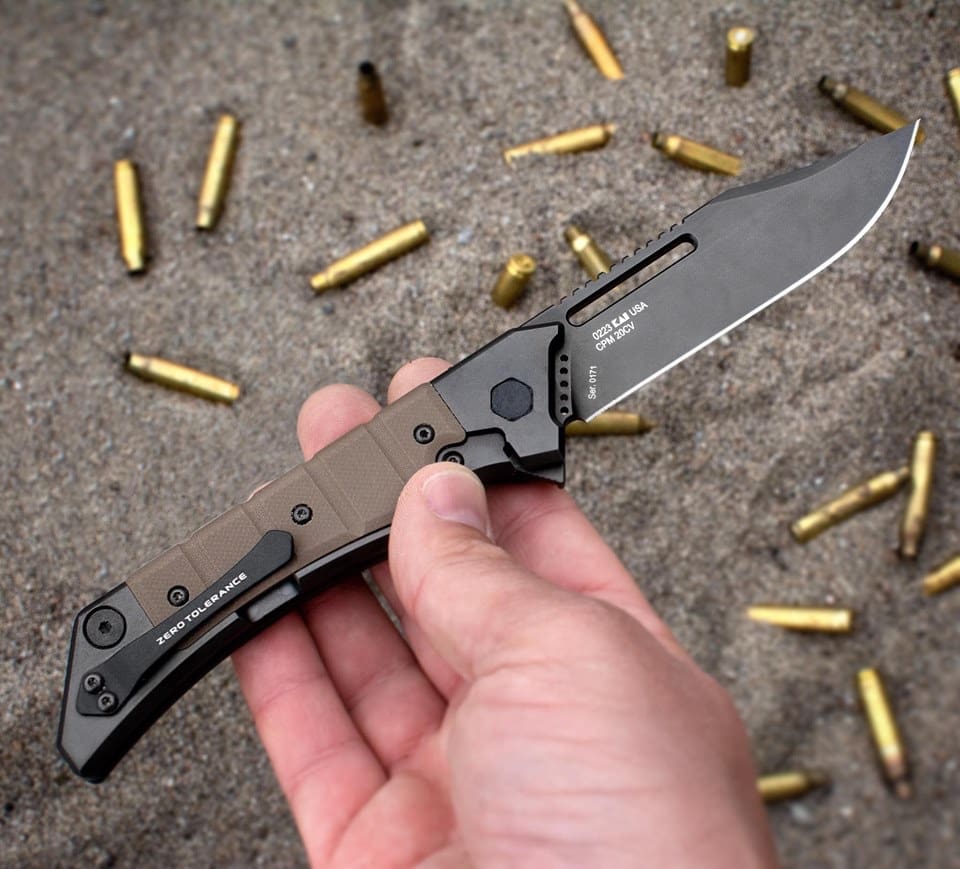
The titanium handle is also DLC coated and bead blasted to extend the matte look. The 0223 has a sturdy titanium frame lock with a hardened steel lockbar insert for reliable lockup. ZT’s KVT ball-bearing system, combined with a highly ergonomic flipper, make the 0223 quick and easy to open, too. The 0223’s earth brown G10 handle scales are reminiscent of the original military knife’s stacked leather handle. Our G10 scales wrap around to the top of the handle and meet in the middle to provide a comfortable and secure grip—as well as helping to keep debris out of your knife.
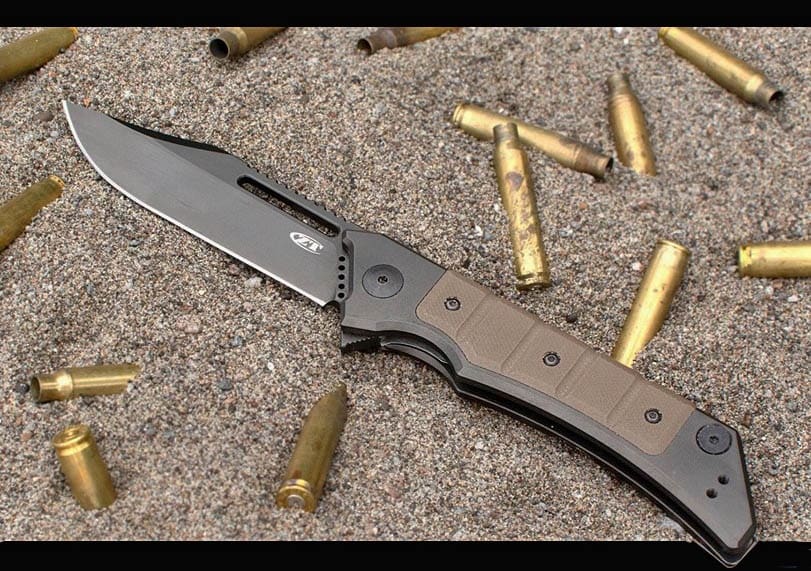
The pocketclip is left/right reversible and made of bent steel with a black Teflon® finish. The bronze-anodized titanium tube spacer in the handle is secured by two custom screws. A series of decorative holes drilled in the ricasso of the blade echo the jimping along the spine and add to the subtle details of this remarkably handsome knife.
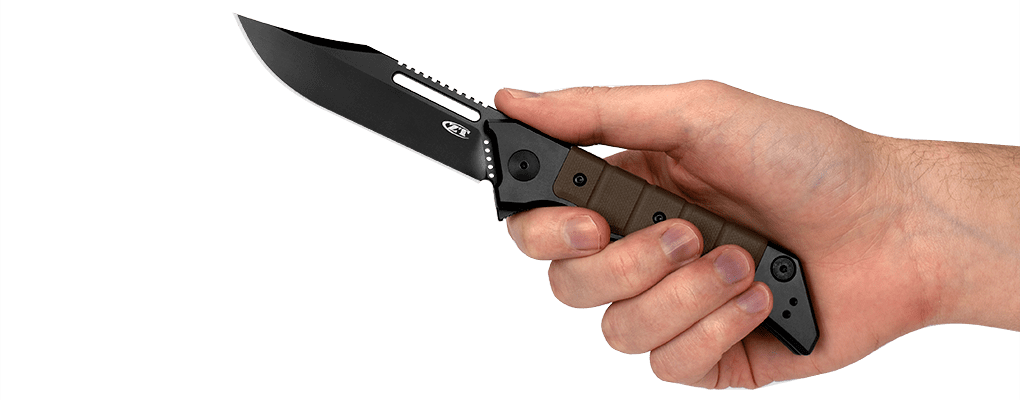
The ZT0223 full product sheet can be found online here; on IG @ztknives.
Specs include:
Made in the USA
Manual open, KVT ball-bearing system
Frame lock, with steel lockbar insert
Reversible clip (left/right, tip-up)
Steel: CPM 20CV, DLC coating
Handle: Titanium, DLC coating, earth brown G10
Blade Length: 3.5 in. (8.9 cm)
Blade Thickness: 0.156 in. (0.4 cm)
Closed Length: 5 in. (12.8 cm)
Overall Length: 8.6 in. (21.8 cm)
Weight: 4.7 oz. (134 g)
Read up on all the knives here on SSD: